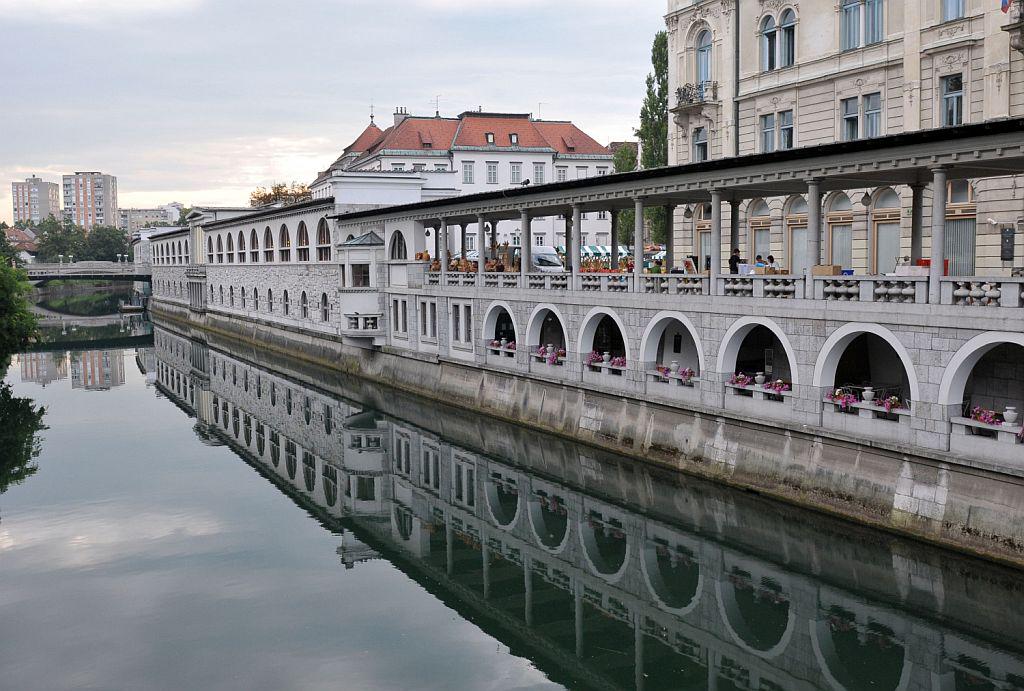
In the Middle Ages, weekly and then daily markets took place around the town; the banks of the Ljubljanica River were the site of a meat market. In the 19th century, the area in front of City Hall became established as the location of the vegetable market. Women from the Trnovo and Krakovo districts, which were renowned for their lettuce and other vegetables, would bring their produce to the market in small carts. The practice continued even after the market moved to its present location, the Vodnik Square near the river, in the early 20th century.
The market emerged not just as the city’s culinary heart, but also an integral part of its culture, serving as a meeting place for people from various social classes.
In the 1940s, the famed Slovenian architect Jože Plečnik built covered markets on the site of the former meat market by the Ljubljanica river. These days, meat, fish, and dairy products are sold beneath Plečnik’s distinctive arcades. The master architect even designed a bridge that would connect the market with the left bank of the river – a plan that was never realized, although a modern bridge was built on the site in 2010.
In recent years, a proposal to build garages under the market has raised the ire of many locals. The plan would provide parking for a proposed hotel in Ljubljana’s Old Town, but it would also require the temporary closure of the market. Many fear that the construction would cause many sellers – and buyers – to abandon their daily routines and leave the market for good. The plan has caused a considerable backlash, with several organized groups standing up to what they see as money-oriented priorities that could endanger a part of Ljubljana that gives the entire city a special character.
But for now, the Ljubljana market remains as it has been for generations – one of only a handful of markets at a heart of a European capital city. It’s not just beloved by the people of Ljubljana, but it’s also a major attraction for travelers who come to explore Slovenia’s capital.

































































